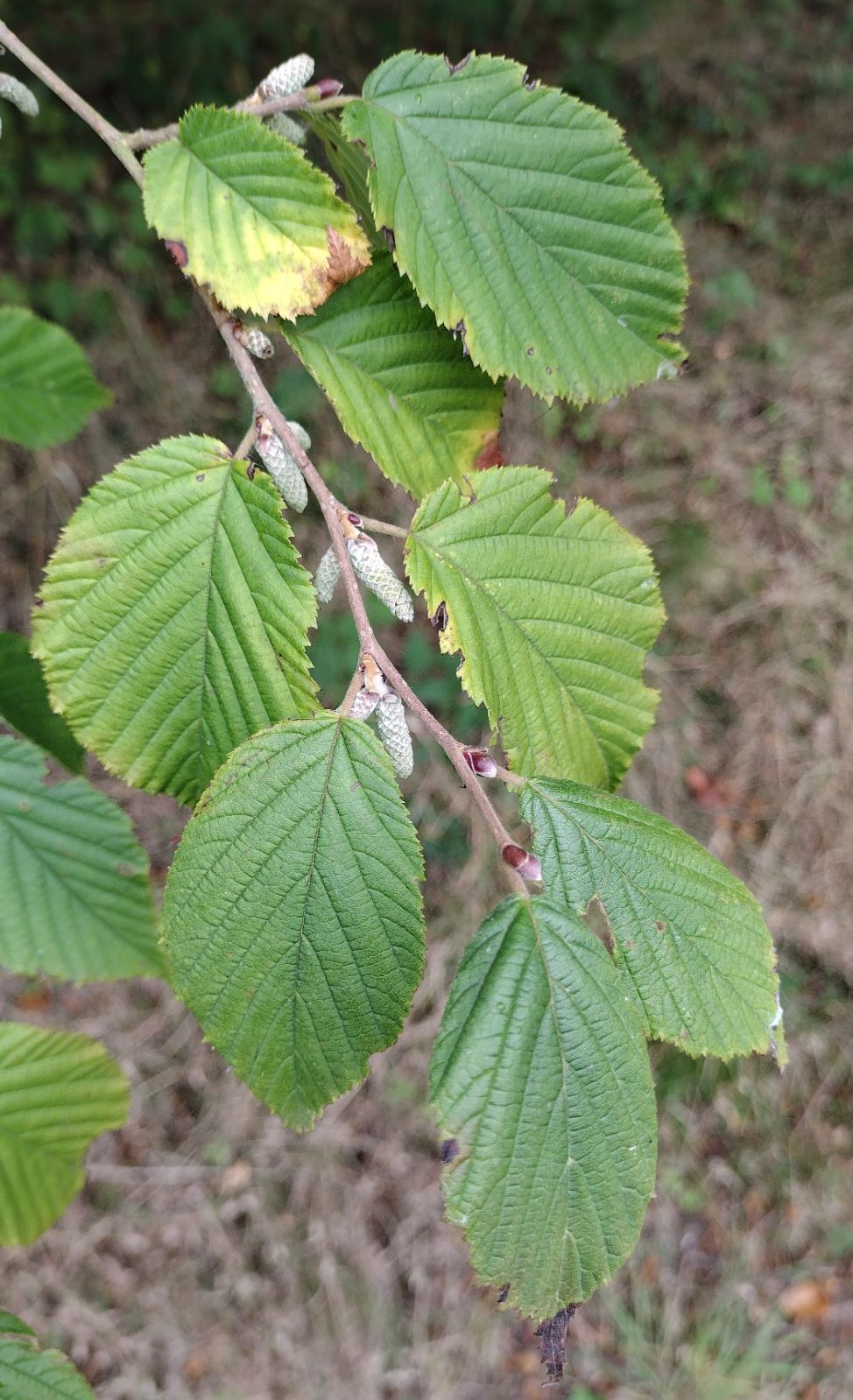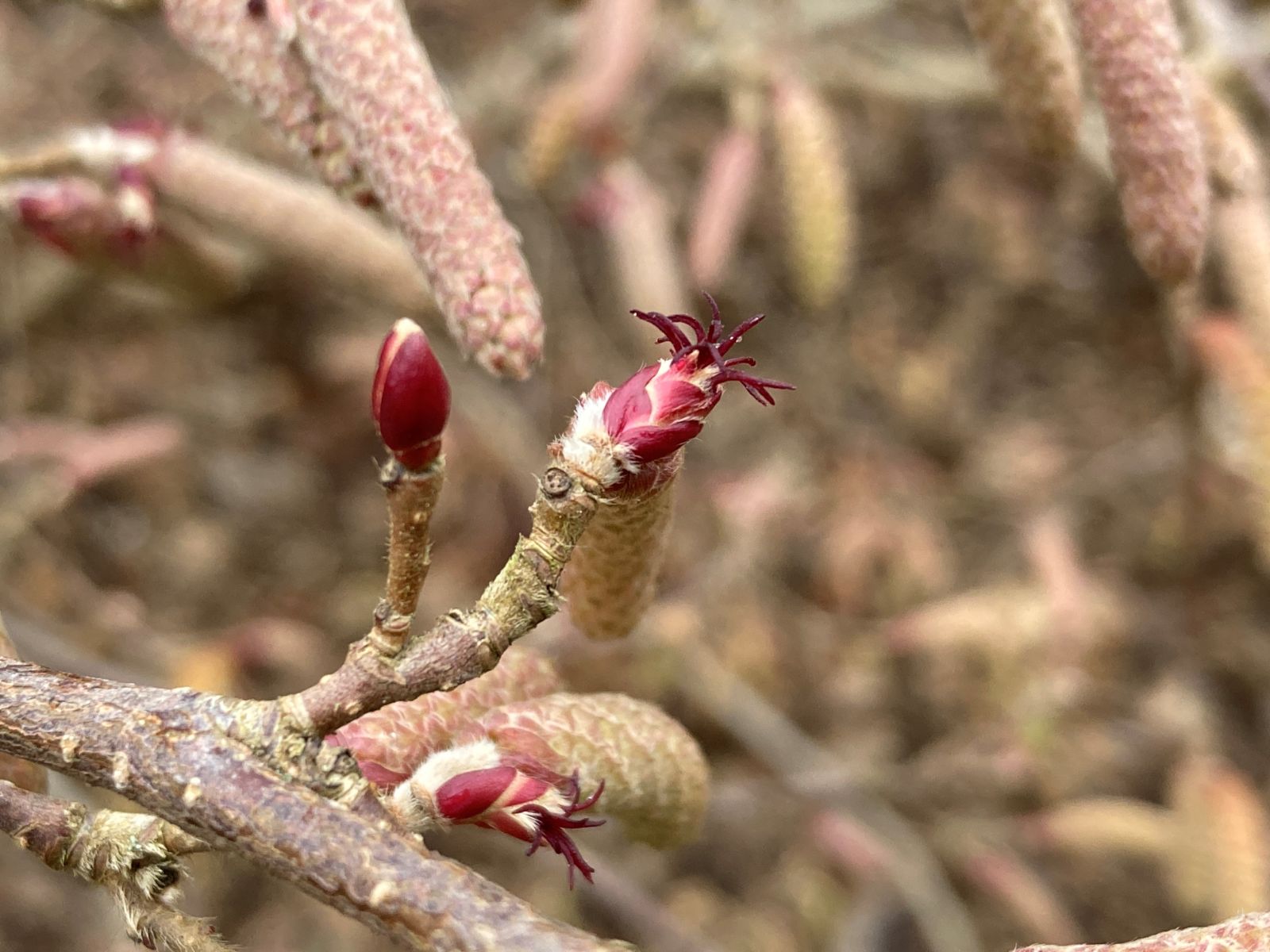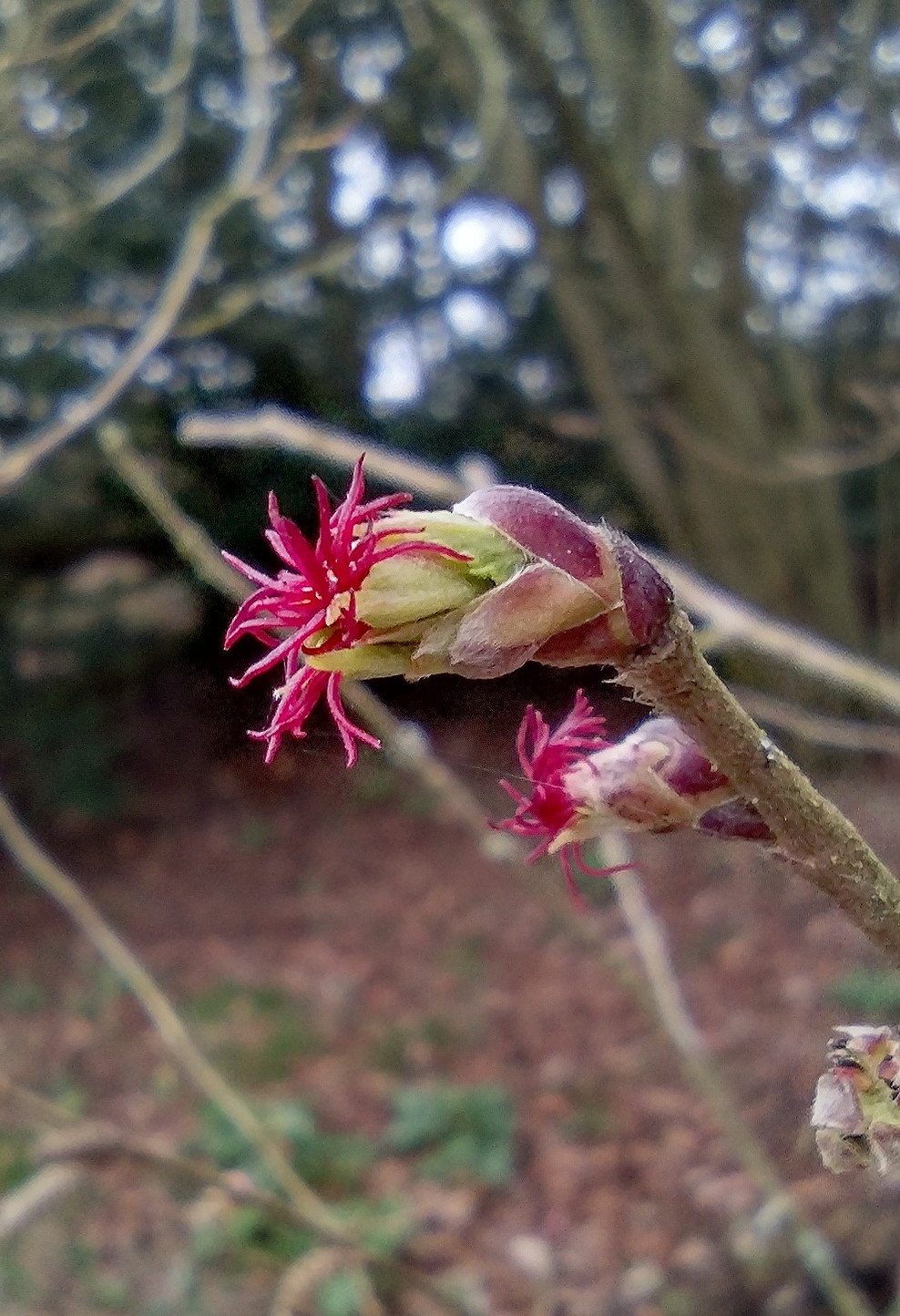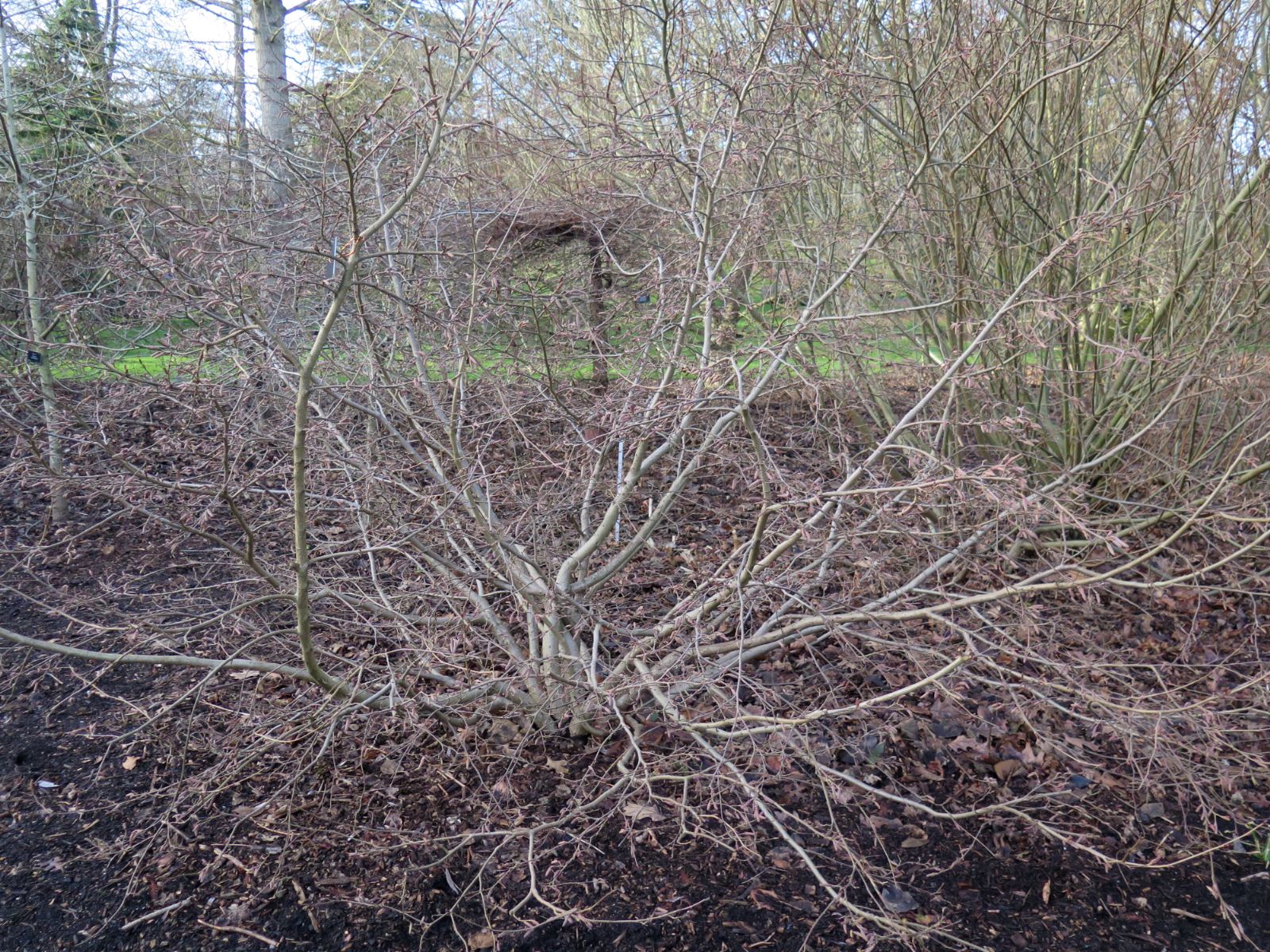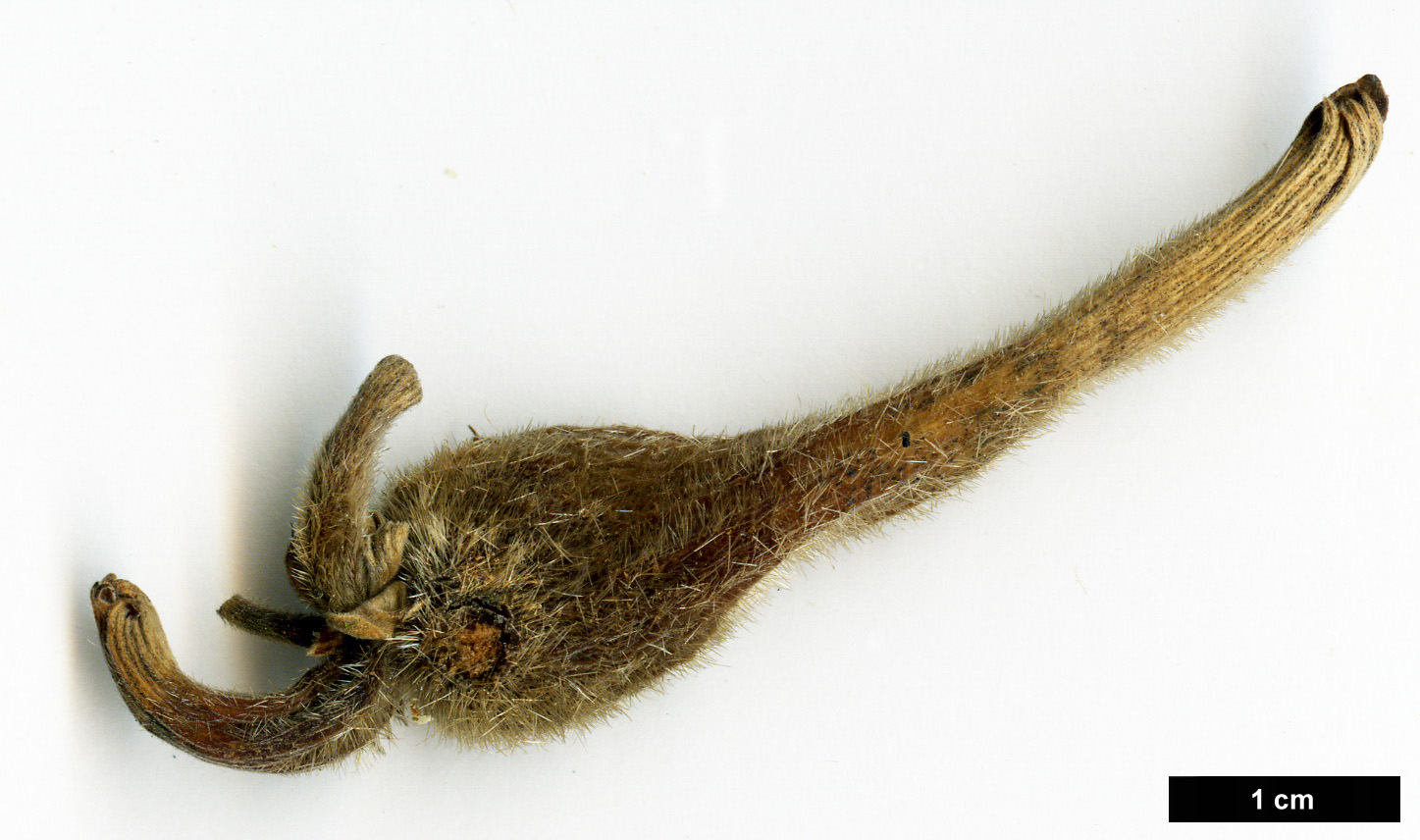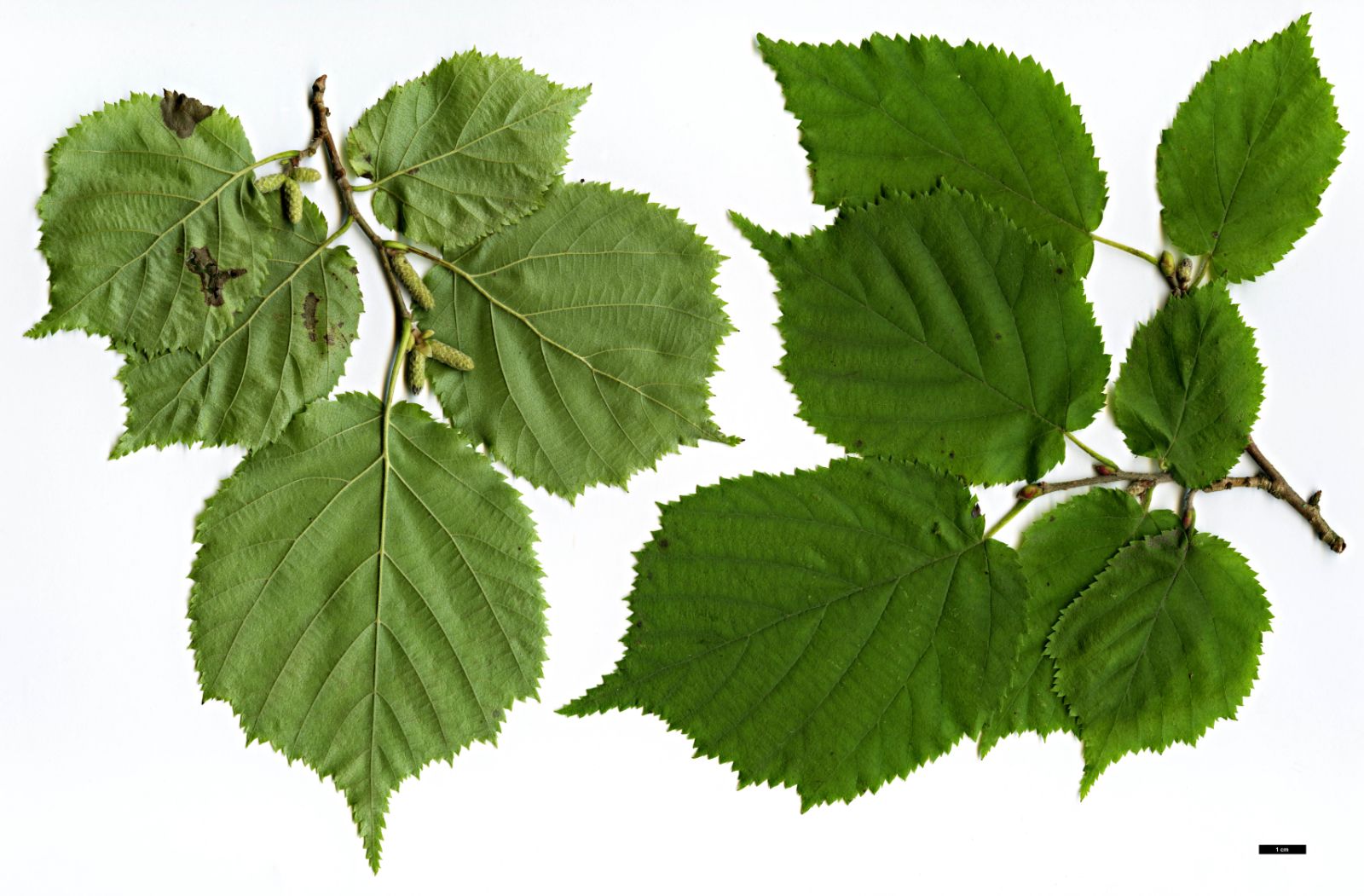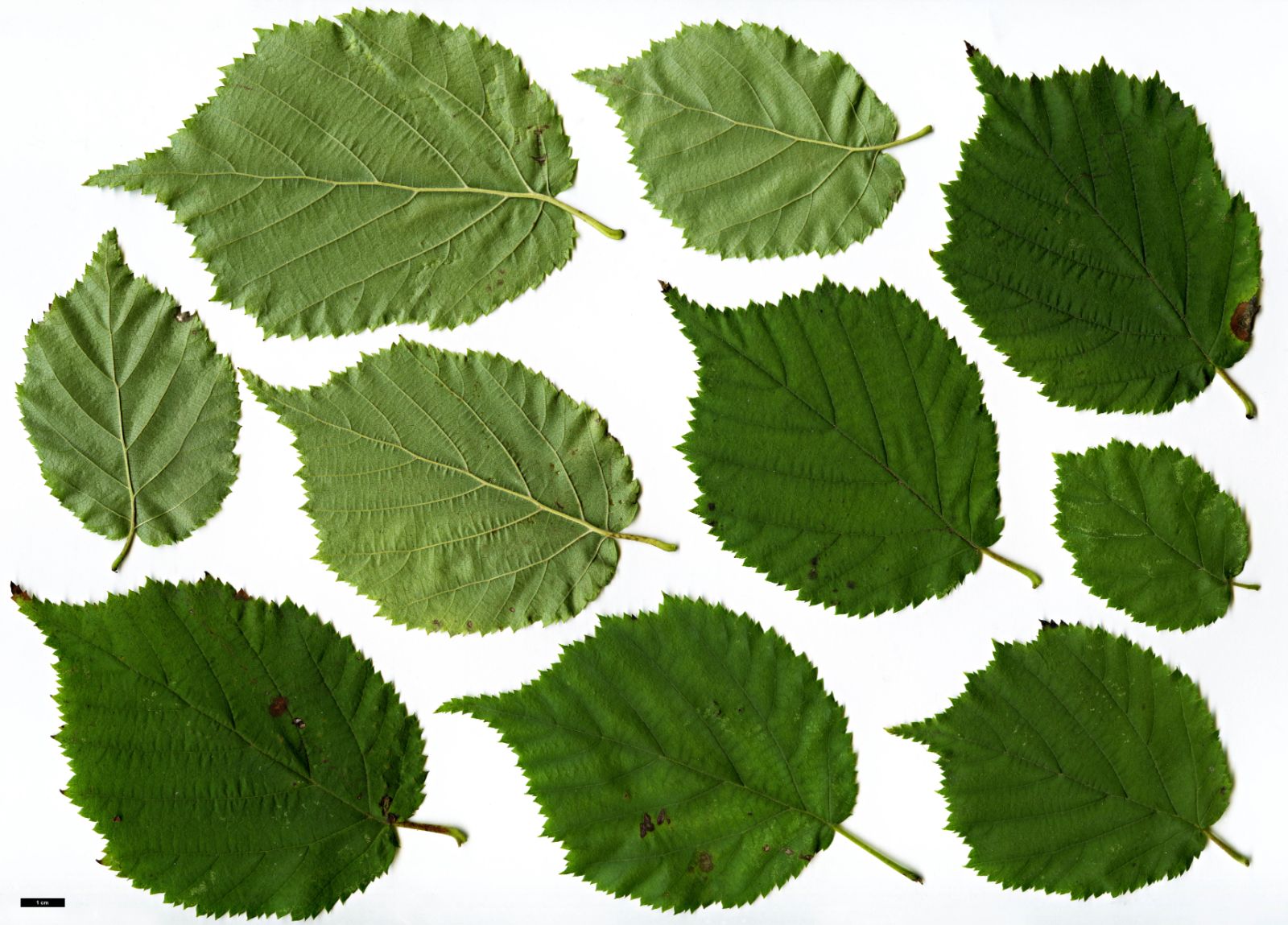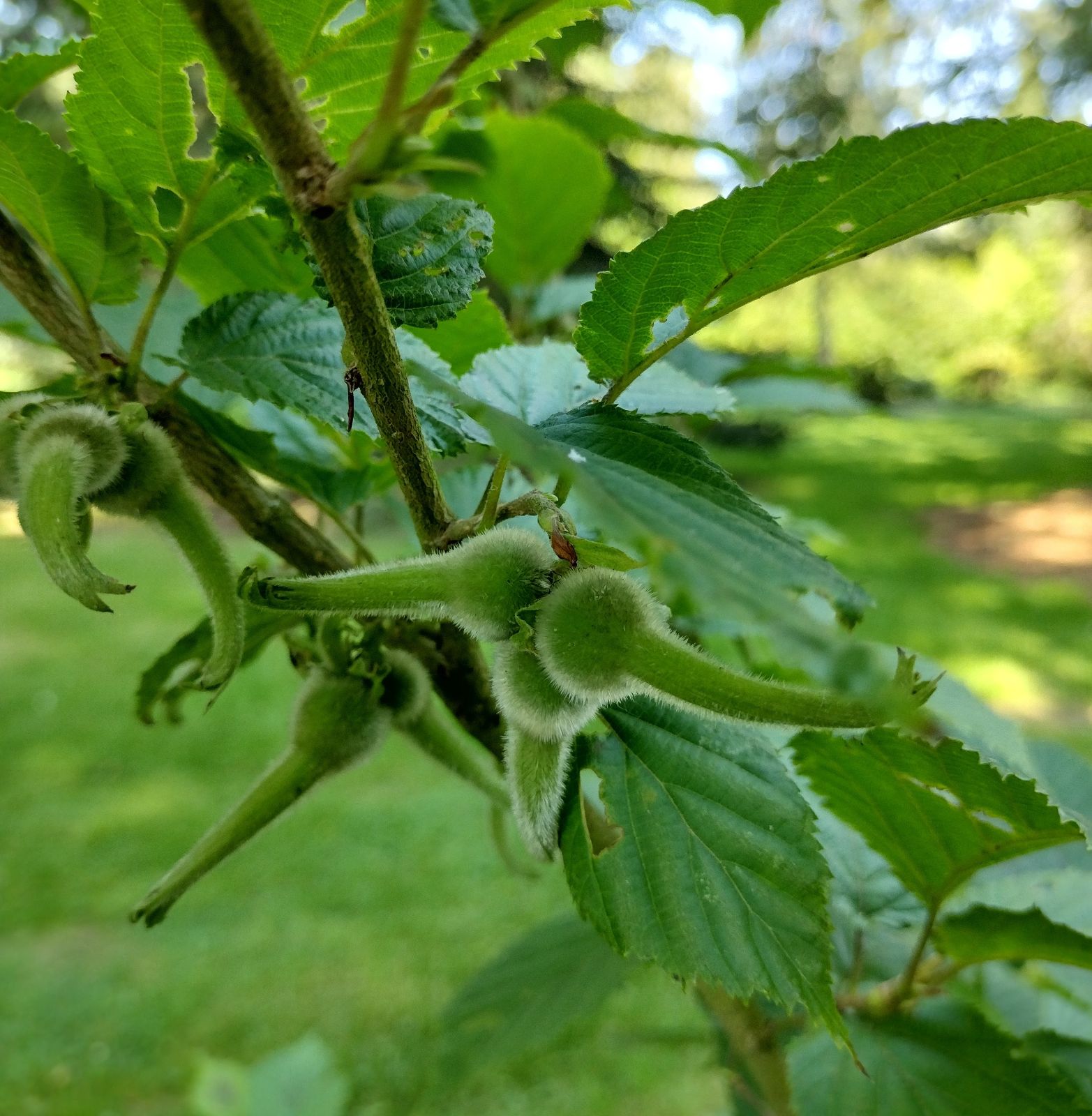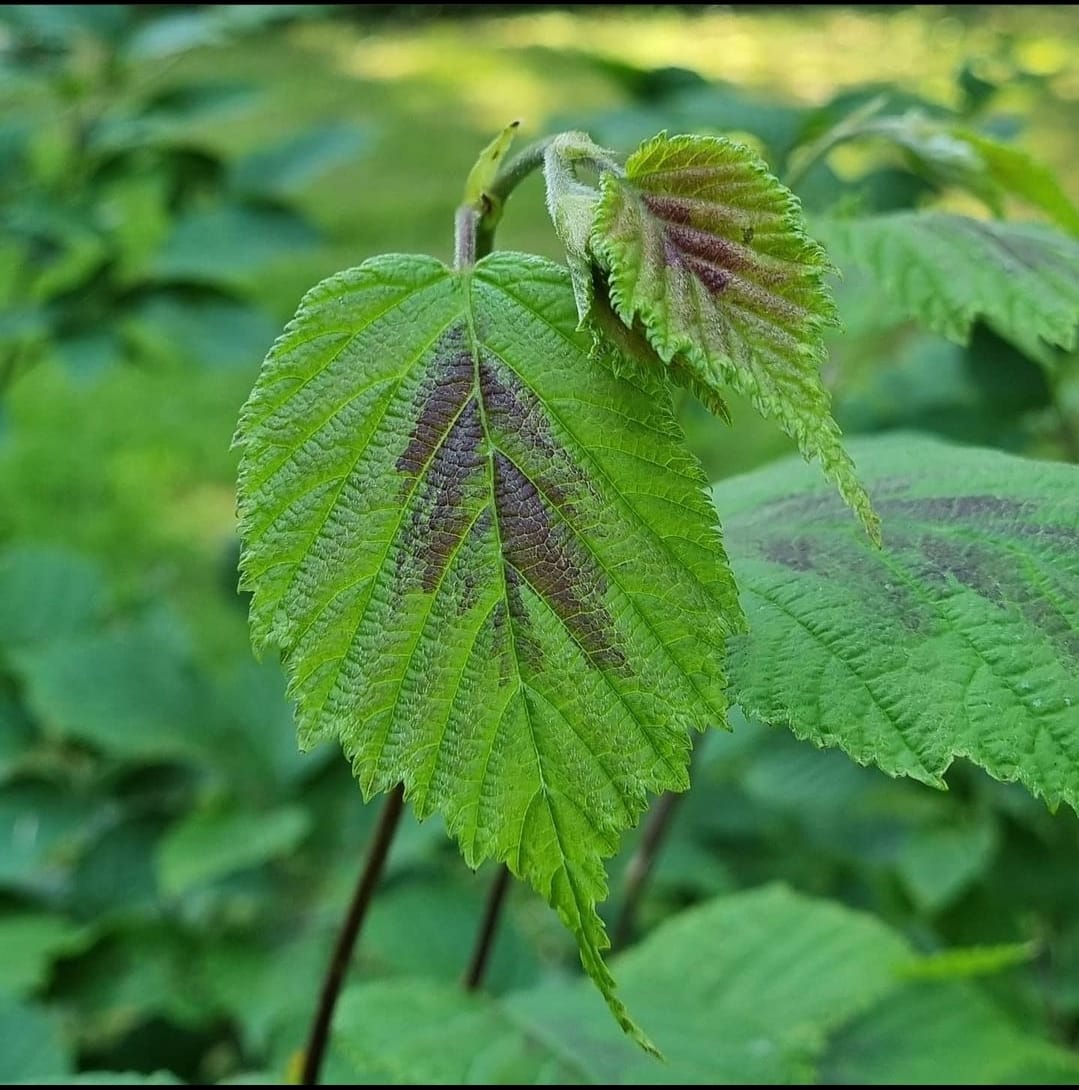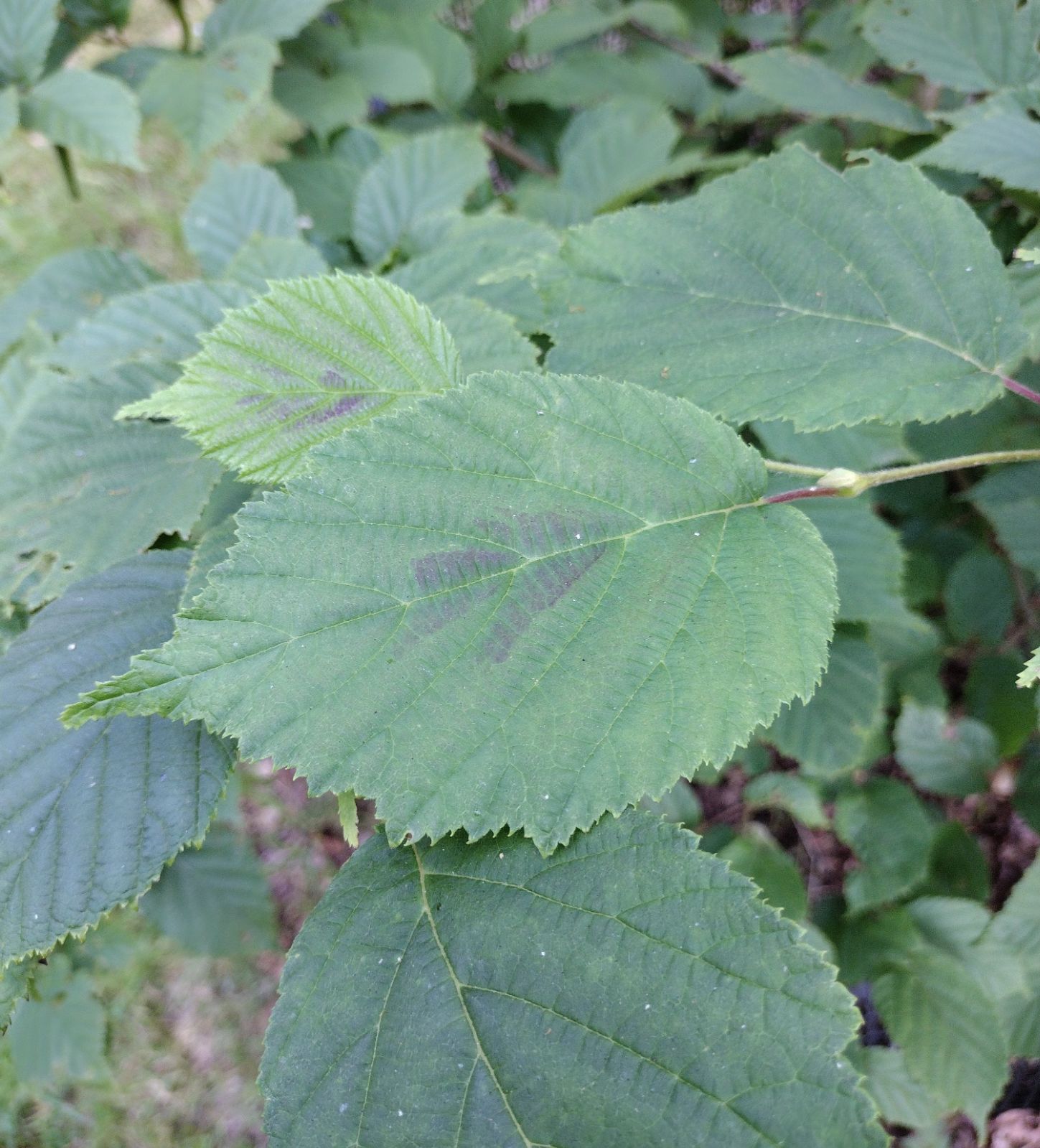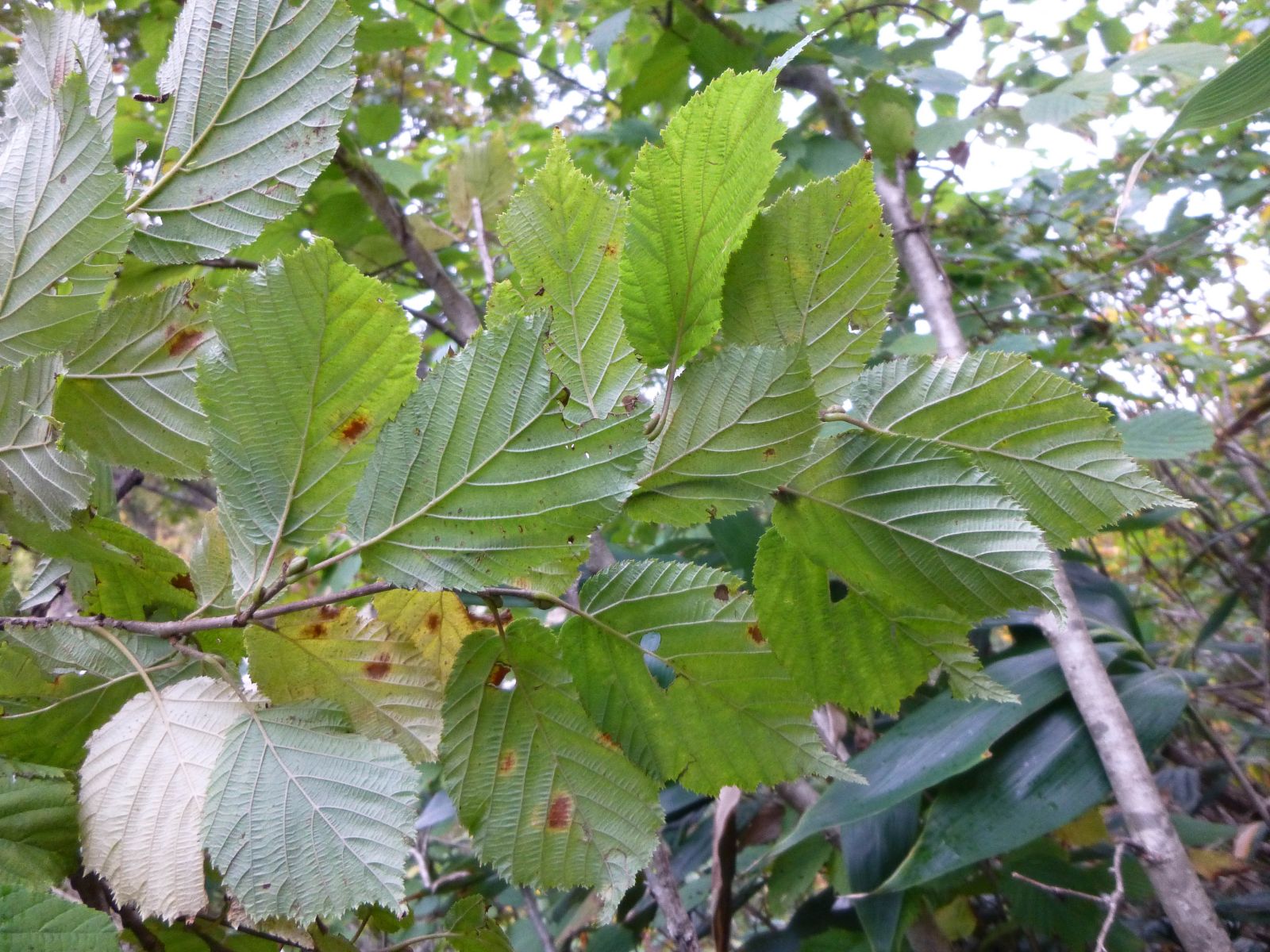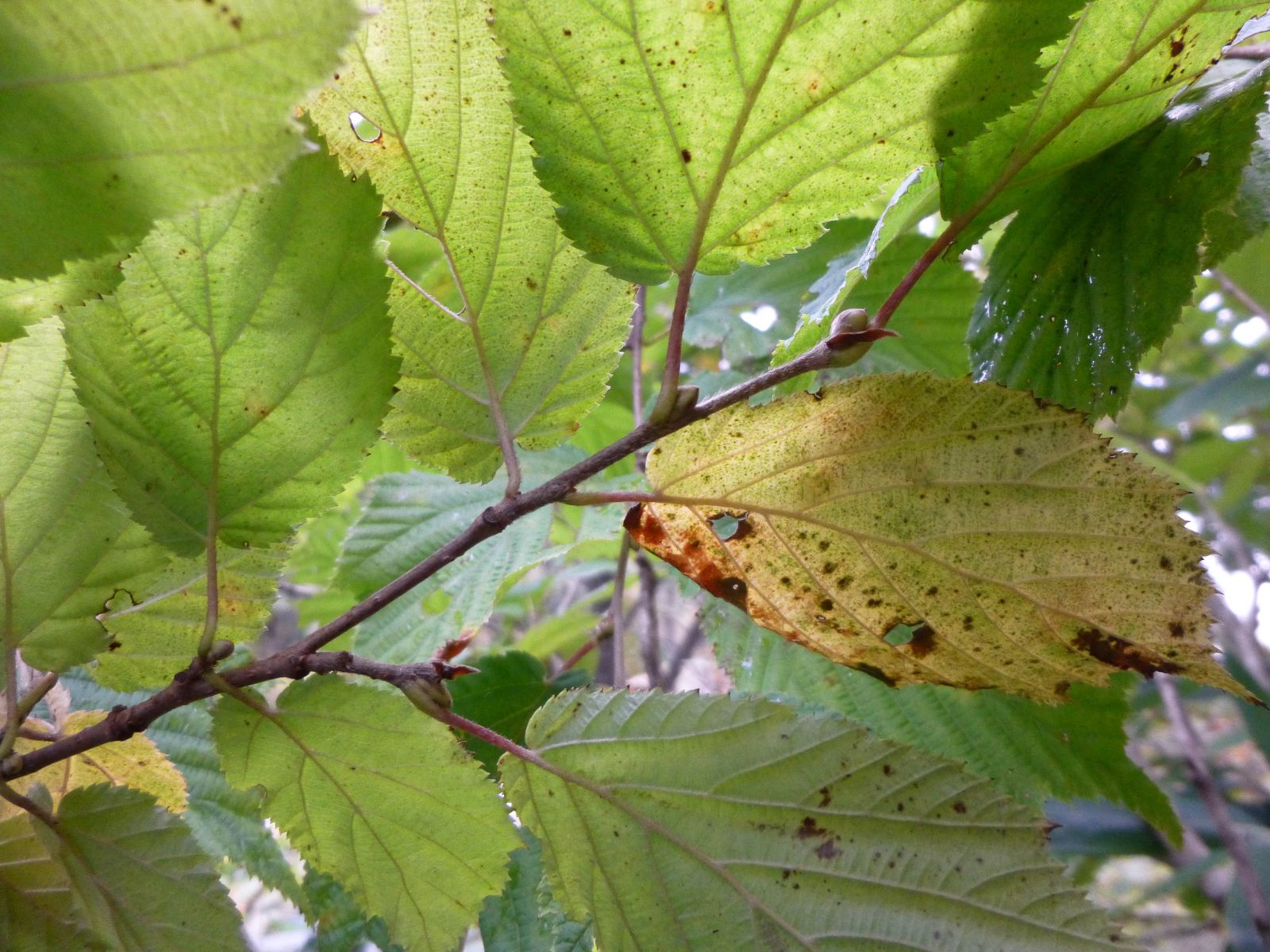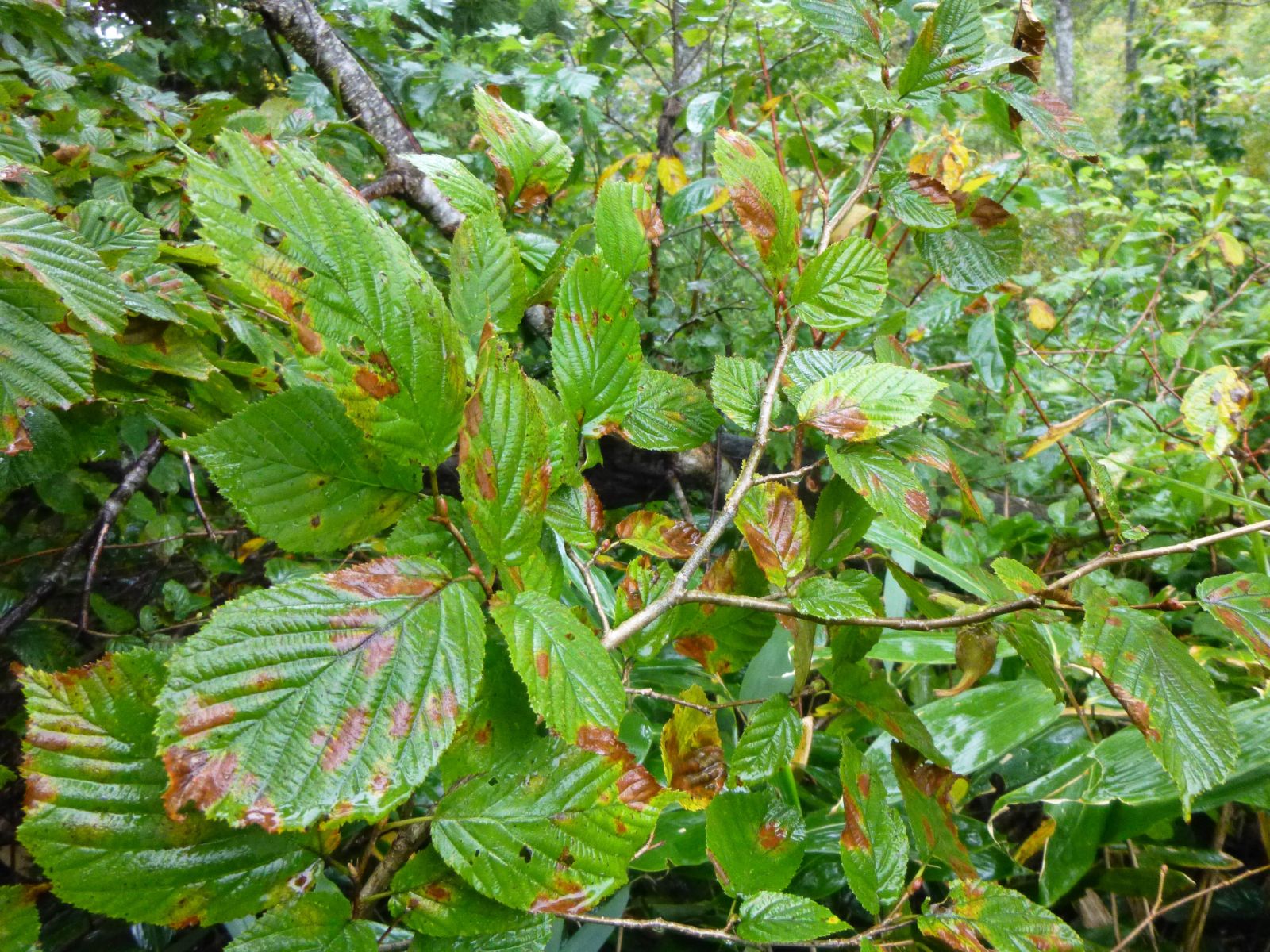Corylus sieboldiana
Sponsor
Kindly sponsored by
Kent Men of The Trees
Credits
Owen Johnson & Richard Moore (2023)
Recommended citation
Johnson, O. & Moore, R. (2023), 'Corylus sieboldiana' from the website Trees and Shrubs Online (treesandshrubsonline.
Genus
Common Names
- Japanese Hazel
Synonyms
- Corylus brevirostris (C. K. Schneid.) Miyabe
- Corylus hallaisanensis Nakai
- Corylus rostrata var. mitis Maxim.
- Corylus sieboldiana var. brevirostris C. K. Schneid.
- Corylus sieboldiana var. hallaisanensis (Nakai) M. Kim
- Corylus sieboldiana var. mitis C. K. Schneid.
Infraspecifics
Other taxa in genus
- Corylus americana
- Corylus americana × avellana
- Corylus avellana
- Corylus avellana × cornuta
- Corylus avellana × heterophylla
- Corylus avellana × maxima
- Corylus avellana × sieboldiana
- Corylus avellana × sutchuenensis
- Corylus Badgersett Hybrids
- Corylus chinensis
- Corylus colchica
- Corylus colurna
- Corylus × colurnoides
- Corylus cornuta
- Corylus fargesii
- Corylus ferox
- Corylus 'Grand Traverse'
- Corylus heterophylla
- Corylus jacquemontii
- Corylus maxima
- Corylus 'Purple Haze'
- Corylus 'Rosita'
- Corylus 'Ruby'
- Corylus × spinescens
- Corylus sutchuenensis
- Corylus 'Te Terra Red'
- Corylus × vilmorinii
- Corylus yunnanensis
Shrub to 6 m. Bark grey-brown, smooth at first. Young twigs pubescent with long glandular hairs, and with many conspicuous round and linear lenticels. Leaves 6–12(–15) × 4–9(–10) cm, rounded to obovate, base rounded to shallowly cordate, tip acuminate, coarsely and irregularly doubly serrate or lobulate above the middle, pubescent under the veins at least; petiole 12–30 mm, pubescent with long glandular hairs. Male catkins 2–4 together. Nuts 2–4 together, small (12 mm long), egg-shaped, smoothly covered in a husk which is constricted to form a tube a little longer than the nut itself, the rim with lanceolate lobes; husk purplish when immature, with a dense yellowish pubescence and pale brown bristles. Flowering (Japan) March–May, fruiting October. (Li & Skvortsov 1999; Bean 1981; De Langhe 2016; Takao Museum 2023).
Distribution Japan North Korea Unconfirmed South Korea
Habitat Mountain forests, thickets
USDA Hardiness Zone 5
RHS Hardiness Rating H6
Conservation status Least concern (LC)
The east Asian equivalent of the American Beaked Hazel (Corylus cornuta) shares the bristly, ‘elephant’s-trunk’ husks which protect the ripening nuts, but has often slighly larger and more distinctly lobed leaves on slightly longer stalks (Bean 1981); the nuts also ripen later in autumn. The variety described here (var. sieboldiana) was the first to be described – by five years – and is a shorter-husked variant of the more widespread var. mandshurica, whose leaves are less likely to be heart-shaped at the base (Edwards & Marshall 2019).
Var. sieboldiana was introduced to the west in 1904 (Bean 1981), and has maintained a rather inconspicuous place in cultivation. (It should probably be born in mind that hazels labelled simply as Corylus sieboldiana may sometimes represent var. mandshurica, and that plants collected in Korea or Japan are not necessarily var. sieboldiana. A 15 m tree hazel at the National Botanic Garden at Glasnevin in Ireland labelled in 2012 as C. sieboldiana was obviously a case of misidentification (Tree Register 2023).)
Plants of known wild origin in big gardens in the UK include MK 91/28 and CU 95/215 at Howick Hall in Northumberland, a plant from Honshu (Japan) at the Sir Harold Hillier Gardens, and Japanese and Korean collections at the Royal Botanic Garden Edinburgh and its outstations (Tree Register 2023; Royal Botanic Garden Edinburgh 2023). The Linnaeus Garden in Uppsala, Sweden, has an example from seed collected in Japan (Royal Botanic Garden Edinburgh 2023). The Dawes Arboretum in Ohio has two plants of Japanese origin, accessioned in 1991 and 1996 (Dawes Arboretum 2023), while material from a joint expedition to Japan in 2005 by the Royal Botanic Garden Edinburgh, Howick Hall, the Sonoma Botanical Garden in California and the Polly Hill Arboretum in Massachusetts (BBJMT 40) has been shared between these institutions (Royal Botanic Garden Edinburgh 2023). Commercially available collections include BSWJ 11056 from Crûg Farm (UK) and CBJP 967 from Pépinière des Avettes (France) (Crûg Farm Plants 2023; Pépinière des Avettes 2023).
One peculiarity which this species shares with the European C. avellana is that later leaves in full sun can flush with a central irregular blotch of purplish anthocyanins, rather than the expected uniform pigmentation. The purple tint can also be seen in the husks of the ripening fruit in summer (Bean 1981). In the leaves of some seedlings from BSWJ 11056, the purple blotch can be particularly well-defined and decorative.
Corylus sieboldiana is one of the hardiest of hazels, and tends to show good resistance to Eastern Filbert Blight. A good range of material (of both varieties?) is grown at the National Clonal Germplasm Repository in Corvallis, Oregon (Molnar 2011), where plants have been experimentally hybridised in the search for hardy, disease-resistant new fruiting hazels (Erdogan & Mehlenbacher 2000). However, the small nuts of C. sieboldiana, which fall still protected by their prickly husks, do not lend the species to hazelnut production. In 1975, the South Korean Rural Development Administration began to select indigenous hazel stocks, and ten promising strains of C. sieboldiana (of whatever variety) were chosen, and were also experimentally hybridised with various European hazel clones (Molnar 2011). However, C. sieboldiana does not seem to have contributed any of its genes to the selections which are now used for nut production in South Korea.
var. mandshurica (Maxim.) C.K. Schneid.
Common Names
Siberian Hazel
毛榛 (mao zhen)
Synonyms
Corylus brevituba Kom.
Corylus mandshurica Maxim.
Corylus rostrata var. mandshurica (Maxim.) Regel
Shrub to 6 m. Bark grey-brown, smooth at first. Young twigs pubescent, and also with longer glandular hairs, and with many conspicuous round and also linear lenticels. Leaves 6–12(–15) × 4–9(–10 cm), rounded to obovate, cordate at the base, tip acuminate, coarsely and irregularly doubly serrate and lobulate above the middle, pubescent under the veins at least; petiole 12–30 mm, pubescent and also with longer glandular hairs. Male catkins 2–4 together. Nuts 2–4 together, small (12 mm long), egg-shaped, smoothly covered in a husk which is constricted to form a tube 2–3 times as long as the nut itself, the rim with lanceolate lobes; husk purplish when immature, with a dense yellowish pubescence and pale brown bristles. Flowering (China) May–July, fruiting June–September. (Li & Skvortsov 1999; Bean 1981; De Langhe 2016).
Distribution
- China – E Gansu, Hebei, Heilongjiang (Daxinganling), Henan (Funiu Shan), Hubei (unconfirmed), Jilin (Changbai Shan), Liaoning, Nei Mongol, Shaanxi, Sichuan
- Japan – Not in the south
- North Korea
- South Korea
- Russia – Eastern Siberia
RHS Hardiness Rating: H7
USDA Hardiness Zone: 3
Although this variety was described (as Corylus mandshurica Maxim.) five years later than C. sieboldiana (var. sieboldiana), this is the commoner and more widespread plant, occurring across the colder parts of north-east Asia. In Korea and central Japan, it shares habitats with var. sieboldiana and can be distinguished by the sometimes deeper heart-shaped base to its leaves (Edwards & Marshall 2019) and in particular by the much longer tube-like husks which protect the ripening nuts.
Var. mandshurica was the first form of Corylus sieboldiana to reach the west, being introduced by Kew in 1882 by Emil Bretschneider, and to North America about a decade later by Charles Sargent (Bean 1981). In cultivation, hazels grown simply as C. sieboldiana may be var. mandshurica; plants in UK collections known to represent the variety include OUJP 143, collected on Mt Naeba in central Japan in 2013 and grown at the Harcourt Arboretum in Oxfordshire and the Yorkshire Arboretum, and plants at Benmore in Scotland grown from the Edinburgh and Howick Expedition to East Russia in 2015 (number 12). M&H 308 at the Sir Harold Hillier Gardens was collected in South Korea in 1976.
This very hardy variety has been grown at the Linnaeus Garden at Uppsala in Sweden since 1979. Representatives in the United States include a 1998 accession at Longwood Gardens and the Morris Arboretum, both in Pennsylvania (Royal Botanic Garden Edinburgh 2023; Morris Arboretum 2023). Pépinière AOBA in France offers RU 5538, collected in eastern Russia (Pépinière AOBA 2023).

